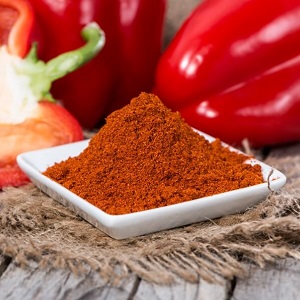- No. 268 Xianghe Street, Economic Development Zone of Xingtai city, Hebei 054001 China
- Byron@hbhongri.cn
Exploring the Culinary Delights and Health Benefits of Paprika Pods in Your Cooking.
The Vibrant World of Paprika Pods A Culinary Journey
Paprika, a spice that graces kitchens around the world, owes much of its flavor and color to the colorful pods from which it is derived. These pods are not just a staple in various cuisines but are also a symbol of rich culinary traditions and the art of seasoning. Originating from the Capsicum annuum species, paprika is cultivated in several regions, most famously in Hungary and Spain, each variety bringing its own unique character to the table.
The journey of paprika begins with the harvesting of ripe red pods. Once picked, they undergo a meticulous drying process that helps to preserve their vibrant color and distinct flavor. The drying method can vary—some regions use traditional sun-drying techniques, while others may employ more modern dehydrators. The resultant dried pods can be ground into powder, ranging from sweet to spicy, depending on the variety of the chili godmother.
One of the most notable varieties of paprika is Hungarian sweet paprika, known for its sweet yet slightly smoky flavor profile. It is an essential ingredient in classic dishes such as goulash and paprikash. In Hungary, paprika consumption is deeply embedded in the national culture, almost transcending into an art form. Hungarian chefs meticulously balance the spice with a variety of ingredients, creating harmonious dishes that showcase the depth and warmth of the paprika flavor.
Spanish paprika, or pimentón, has garnered a reputation of its own, with its distinct varieties including sweet, bittersweet, and hot. Spanish paprika is often smoked, imparting a deep, rich flavor that is crucial in traditional dishes like chorizo and paella. This particular paprika exemplifies how the method of preparation can transform the final profile of the spice, offering a range of options for culinary applications.
paprika pods

In addition to adding flavor, paprika also serves as a vibrant garnish, brightening up dishes with its rich natural hue. A sprinkle of paprika can elevate roasted vegetables, soups, and sauces, giving them a warm, inviting appearance. The visual appeal of paprika pods and their powder encourages chefs and home cooks alike to be creative with their presentations.
Moreover, the health benefits of paprika should not be overlooked. Rich in antioxidants like vitamin A and C, as well as capsaicin, paprika possesses anti-inflammatory properties. Regular consumption can aid in boosting immunity and may even contribute to improved digestion. Thus, not only does it enhance our culinary experiences, but it also supports our overall well-being.
Paprika pods can also be intriguing in their growing process. They are relatively easy to cultivate, making them a popular choice for home gardeners. The vibrant green plants with their glossy, red fruits can provide a beautiful addition to any garden. Watching the pods mature from green to deep red is a rewarding experience, and many gardeners find joy in harvesting their own spices, knowing they were nurtured from seed to harvest.
In conclusion, paprika pods are more than just ingredients; they are a celebration of culture, history, and the art of cooking. Their versatility across various cuisines is a testament to their universal appeal. Whether you’re a professional chef or a passionate home cook, experimenting with paprika can unlock a whole new world of flavors. The next time you sauté your vegetables or season a stew, remember the humble paprika pod, and let it transport you to the vibrant markets of Hungary or the sun-soaked fields of Spain, where culinary traditions and love for flavor flourish.
-
Turmeric Rhizome Powder: A Golden Treasure from Roots to TableNewsJul.28,2025
-
The Versatile Application Of Crushed Red Hot Peppers: Lighting Up The Red Flames On The Dining TableNewsJul.28,2025
-
The Paprika: A Touch Of Vibrant Red In Color, Flavor, And CultureNewsJul.28,2025
-
Ground Turmeric: A Modern Examination of an Ancient SpiceNewsJul.28,2025
-
Capsicum Liquid Extract: Features, Applications, and ChallengesNewsJul.28,2025
-
Application of Capsicum Liquid Extract in FoodNewsJul.28,2025







